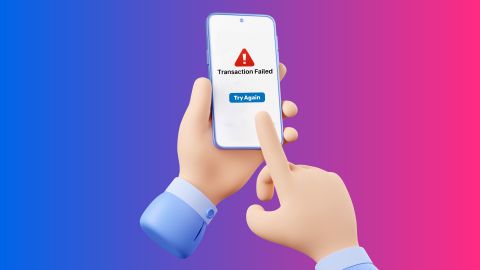Discover the concept of kilowatt-hour (kWh), how it impacts your energy usage, and why it's essential for managing electricity consumption and saving costs. Learn more now!
What is a kilowatt hour
-
A kilowatt-hour (kWh) is a unit of energy that quantifies electricity consumption. It represents the amount of energy used by a device consuming one kilowatt (1,000 watts) over one hour. Commonly used by electric utilities for billing, one kWh equals 3.6 million joules.
A kilowatt hour (kWh) measures the energy you use, whether it’s powering appliances or lighting up your home. As those kWhs add up, paying your electricity bill becomes essential. With Bajaj Finserv’s BBPS platform, Bajaj Pay, you can pay your bills quickly and hassle-free, so tracking your energy use is easier than ever.
Understanding kWh helps consumers manage energy usage, reduce costs, and make informed decisions about appliances and energy sources. For instance, a 100-watt light bulb running for 10 hours consumes 1 kWh. Awareness of kWh usage is essential for promoting energy efficiency and sustainability in households and businesses.
Know about kilowatt hour
A kilowatt-hour (kWh) is a unit of energy that quantifies electricity consumption over time. It represents the energy a device consumes using one kilowatt (1,000 watts) of power for one hour. Understanding kWh is essential for effectively managing energy usage and costs in households and businesses.Kilowatt hour unit explained
The kilowatt-hour is a widely used measurement in the energy sector, particularly for billing by electric utilities. One kWh equals 3.6 million joules, which reflects the energy delivered by a one-kilowatt appliance running continuously for one hour. For example, a 100-watt light bulb consumes 1 kWh after being on for 10 hours. This unit helps consumers gauge their electricity usage and make informed decisions about energy consumption.How kilowatt hours are calculated
Calculating kilowatt-hours involves multiplying the power consumption of an appliance (in watts) by the duration of its use (in hours), then dividing by 1,000 to convert to kilowatts. The formula is:
kWh=Watts×Hours1000
kWh=
1000
Watts×Hours
For instance, if a 1,500-watt appliance runs for 2 hours, it would consume:
kWh=1500×21000=3 kWh
kWh=
1000
1500×2
=3 kWhPractical applications of kilowatt hours
Kilowatt-hours are crucial for understanding household energy consumption. They help consumers track usage patterns and identify high-energy appliances. For example, running a dishwasher for an hour consumes about 1 kWh, which allows users to plan their energy use during off-peak hours, potentially saving money on electricity bills. Additionally, kWh measurements can guide decisions on energy-efficient appliances and renewable energy sources.Benefits of understanding kilowatt hour
Understanding kilowatt-hours empowers consumers to manage their energy consumption effectively. By monitoring kWh usage, individuals can identify opportunities to reduce waste, lower utility bills, and minimise environmental impact. This knowledge also aids in making informed choices regarding energy-efficient devices and sustainable practices.Difference between kilowatt and kilowatt hour
The key difference between kilowatts (kW) and kilowatt-hours (kWh) lies in their definitions. A kilowatt measures the power consumption rate at any given moment, while a kilowatt-hour measures the total energy consumed over time. For instance, a 1 kW appliance running for one hour uses 1 kWh of energy. Understanding this distinction is vital for accurately assessing energy needs and costs.Conclusion: Why kilowatt hour matters for consumers
Kilowatt-hours are essential for consumers to understand as they directly impact electricity costs and energy management strategies. Individuals can optimise their energy use, reduce expenses, and contribute to more sustainable living practices by grasping how kWh works. Awareness of this unit empowers consumers to make smarter choices regarding their electricity consumption.
-
Recharge and Pay Bills
Mobile Prepaid
Mobile Postpaid
Broadband Bill Payment
Electricity Bill Payment
Bajaj Finserv App for All Your Financial Needs and Goals
Trusted by 50 million+ customers in India, Bajaj Finserv App is a one-stop solution for all your financial needs and goals.
You can use the Bajaj Finserv App to:
You can use the Bajaj Finserv App to:
- Apply for loans online, such as Instant Personal Loan, Home Loan, Business Loan, Gold Loan, and more.
- Explore and apply for co-branded credit cards online.
- Invest in fixed deposits and mutual funds on the app.
- Choose from multiple insurance for your health, motor and even pocket insurance, from various insurance providers.
- Pay and manage your bills and recharges using the BBPS platform. Use Bajaj Pay and Bajaj Wallet for quick and simple money transfers and transactions.
- Apply for Insta EMI Card and get a pre-approved limit on the app. Explore over 1 million products on the app that can be purchased from a partner store on Easy EMIs.
- Shop from over 100+ brand partners that offer a diverse range of products and services.
- Use specialised tools like EMI calculators, SIP Calculators
- Check your credit score, download loan statements and even get quick customer support—all on the app.
Frequently asked questions
What is a kilowatt-hour?
A kilowatt-hour (kWh) is a unit of energy that measures electricity consumption. It represents the amount of energy used by a device consuming one kilowatt (1,000 watts) for one hour.
How do you calculate kilowatt-hours?
To calculate kWh, multiply the power rating of an appliance (in kilowatts) by the time it operates (in hours). The formula is:
kWh=kW×hours
kWh=kW×hours
Why is understanding kWh important for consumers?
Understanding kWh helps consumers manage their energy usage and costs effectively. It allows them to identify high-energy appliances and make informed decisions to reduce their electricity bills.
How can I monitor my household's kWh usage?
You can monitor kWh usage by checking your electricity bill, using smart meters, or calculating the consumption of individual appliances based on their wattage and usage time.
Show More
Show Less




